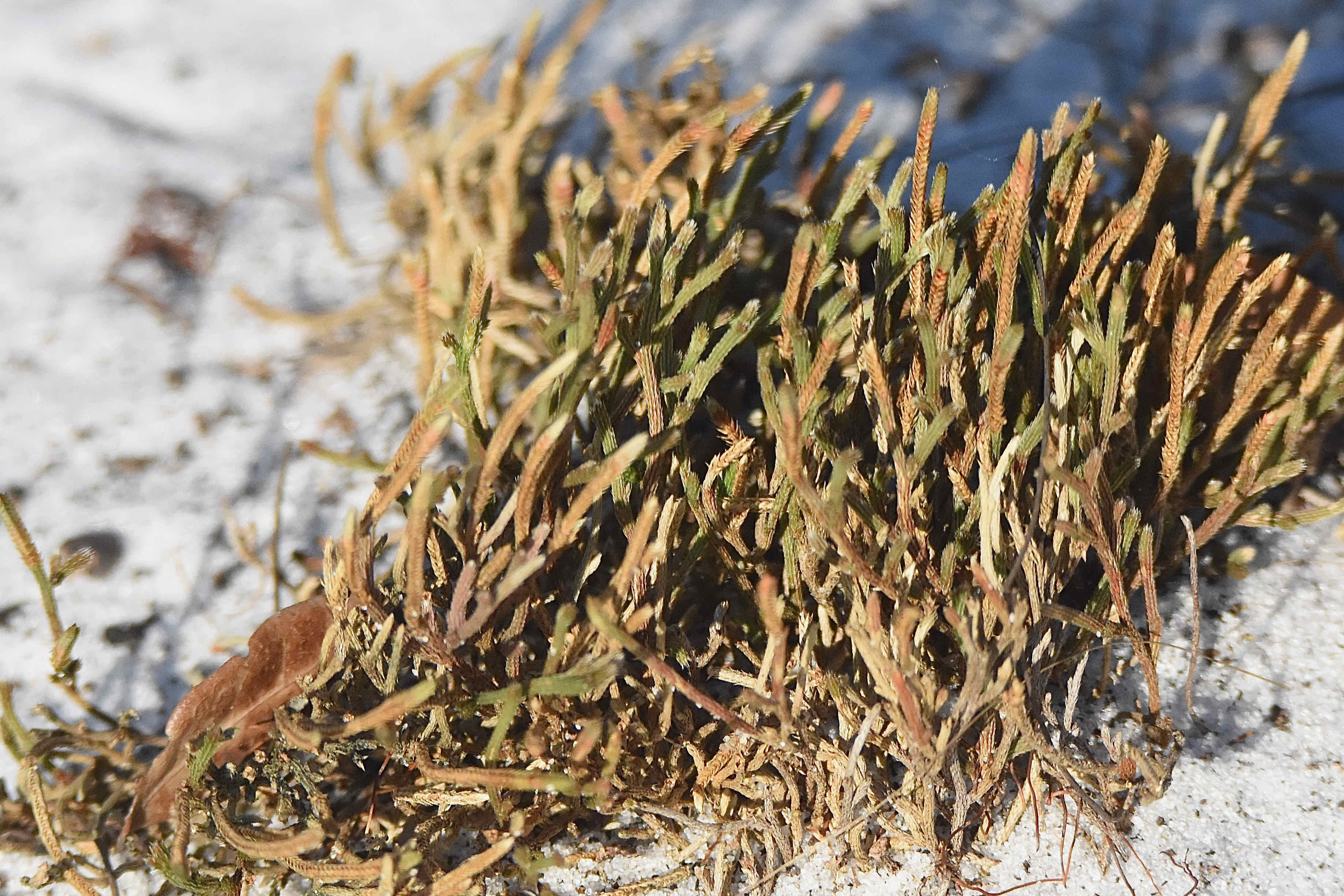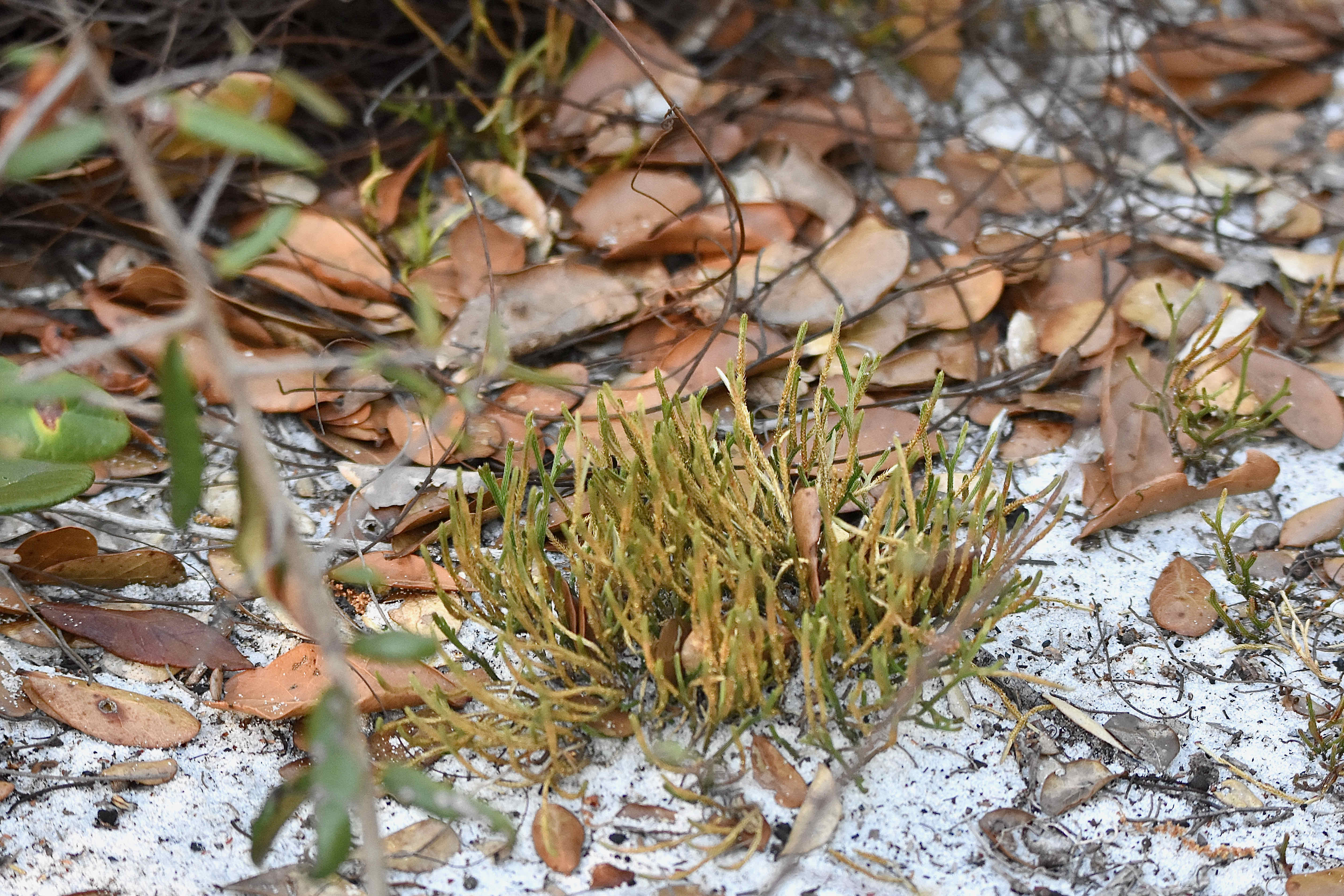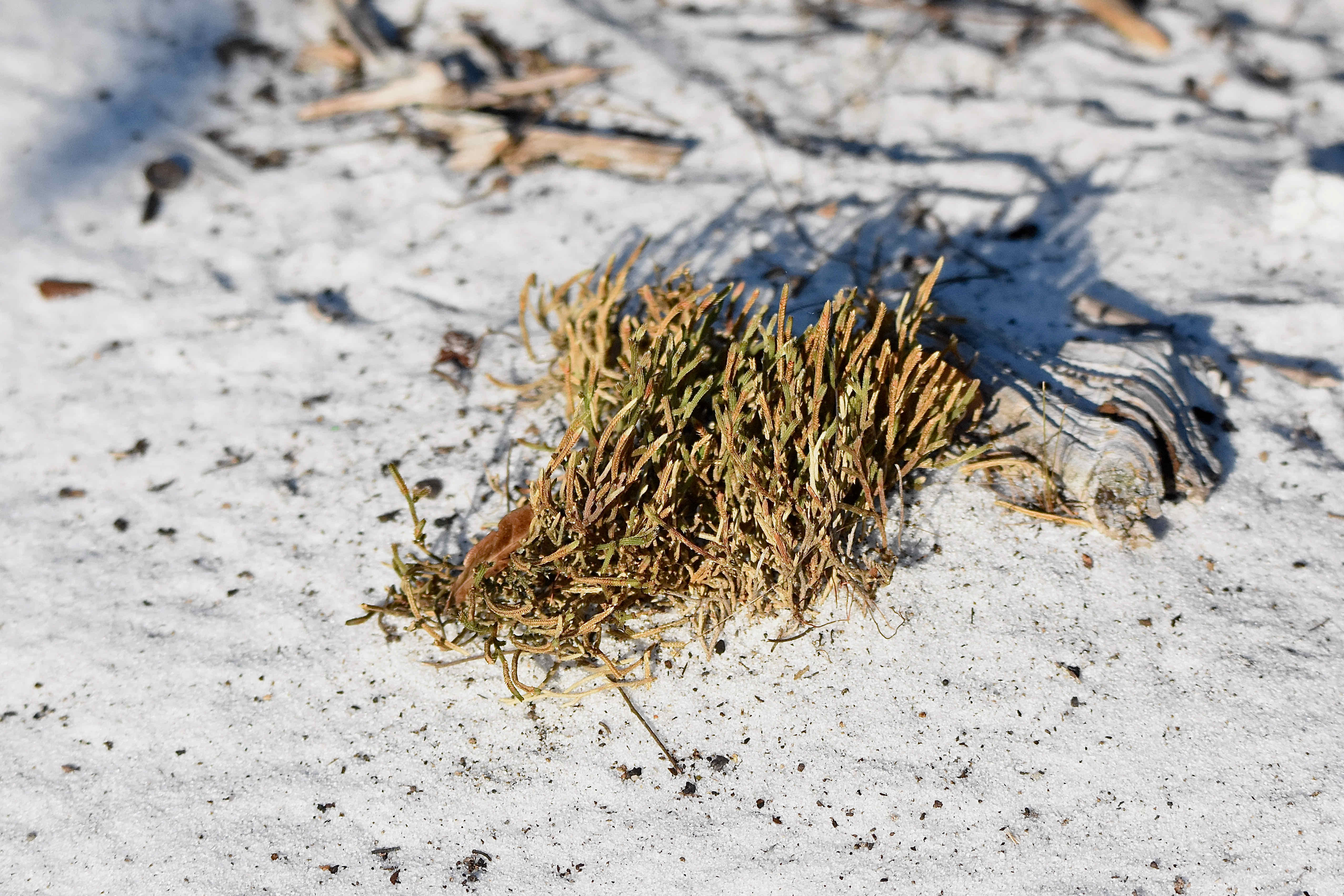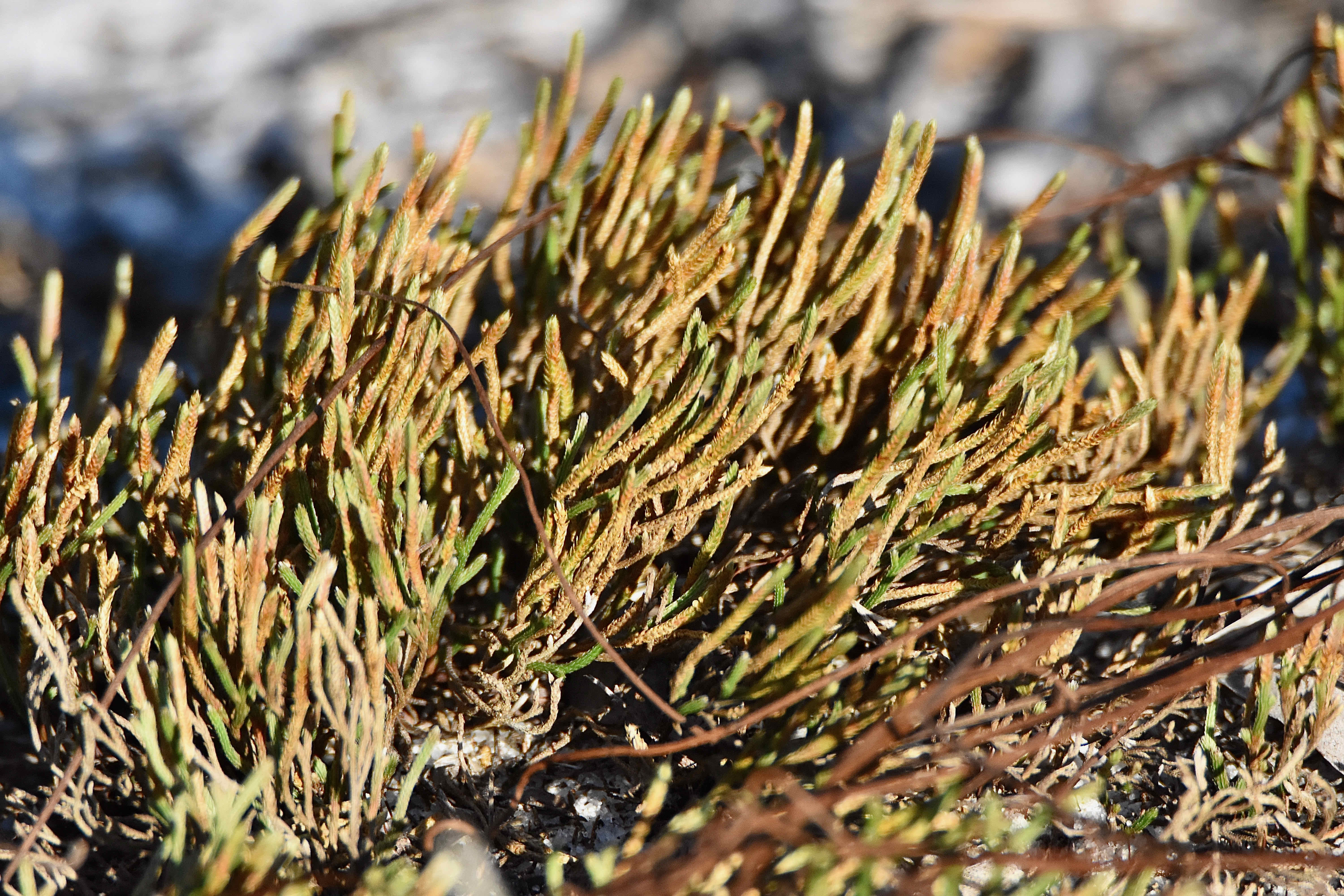
Sand spike moss, photographed at Rosemary Scrub Natural Area, Boynton Beach, Palm Beach County, in March 2018.
Sand spikemoss, Selaginella arenicola, isn’t quite a fern and it definitely isn’t a moss. So what is it? A spikemoss, a kind of plant unto itself.
Spikemosses until recently, were classified as members of one of the group of plants called “fern allies,” species that resemble ferns in some ways — they reproduce via spores like ferns do, and like ferns, they are vascular plants, for example — but differ in others.
Scientists, studying the plants at a genetic level, have determined that spikemosses are different enough genetically from any other kind of plant, including ferns and mosses, to constitue a class of their own. That class is called Selaginellopsida.
Worldwide, there are something like 700 species of spikemosses, all within the genus Selaginella, the sole genus within the family Selaginellaceae. South Florida is home to two spikemoss species, sand spikemoss, and Eaton’s spikemoss. Of the two, sand spikemoss is the more common, found throughout the region and most of Florida.
It is a small plant that grows on the ground or on rocks, reaching perhaps two to four inches tall. It is, however, capable of forming fairly substantial patches, not enough to dominate an area, but large enough to make its presence known. Physically, the best word to describe it is “spiky.” The leaves are small, scale-like along the spike-like stems. It can spread via underground stems called rhizomes; it reproduces via spores, like ferns. It is a vascular plant, meaning it has cells that move water and nutrients from one part of the plant to another.
Sand spikemoss is found in seven southeastern states: Florida, Georgia, Alabama, Louisiana, Arkansas, Oklahoma and Texas. NatureServe includes North Carolina in the mix, but considers it imperiled within the Tarheel State, as it does Alabama and Louisiana.
Favorite habitat: dry pinelands. We’ve seen it in scrubs as well. It is drought tolerant, likes poor soils. and takes to full sun. It is cultivated by those who like its unusual looks.
Other spellings: sand spike-moss. It is a member of Selaginellaceae.



